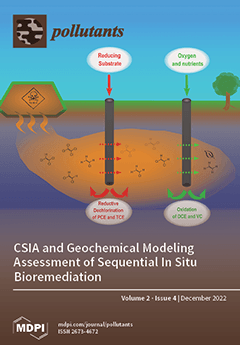Neonicotinoid pesticides are one of the most commercialized groups worldwide. Their application in agriculture aims to control pests through a systemic mode of action which is not specific to target species. Our study aimed to evaluate the effects of the insecticide Actara
® [active ingredient thiamethoxam (TMX)] on a non-target species,
Girardia tigrina. Therefore, acute and sublethal endpoints, such as mortality, feeding activity, locomotion and behavioral biomarkers were assessed. Actara
® exerted low toxicity towards the planarian
Girardia tigrina, showing a 96 h LC
50 value of 77.6 mg TMX·L
−1 (95% C.I: 74.1–81.2 mg TMX·L
−1; R
2 = 0.85). At the sublethal level, Actara
® exerted no effect on regeneration of photoreceptors and auricles of planarians after 24 and 48 h post-exposure (NOEC > 7.8 mg TMX·L
−1). The feeding rate of planarians was significantly increased by Actara
®, but only at the highest tested concentration (LOEC = 7.8 mg TMX·L
−1). Planarians showed to be less sensitive to the active ingredient TMX compared to other freshwater species. This might be explained by the presence of a high proportion of sub-types of acetylcholine receptors in planarians, exhibiting low binding affinity sites for TMX, an acetylcholine partial agonist. The comparison between effects induced by Actara
® with the ones caused by other formulations, in planarians, might support our understanding of how other unknown ingredients can modify the uptake, and bioavailability of such substances, as well as the detoxification capacity of planarians, all of which influences toxicity.
Full article



